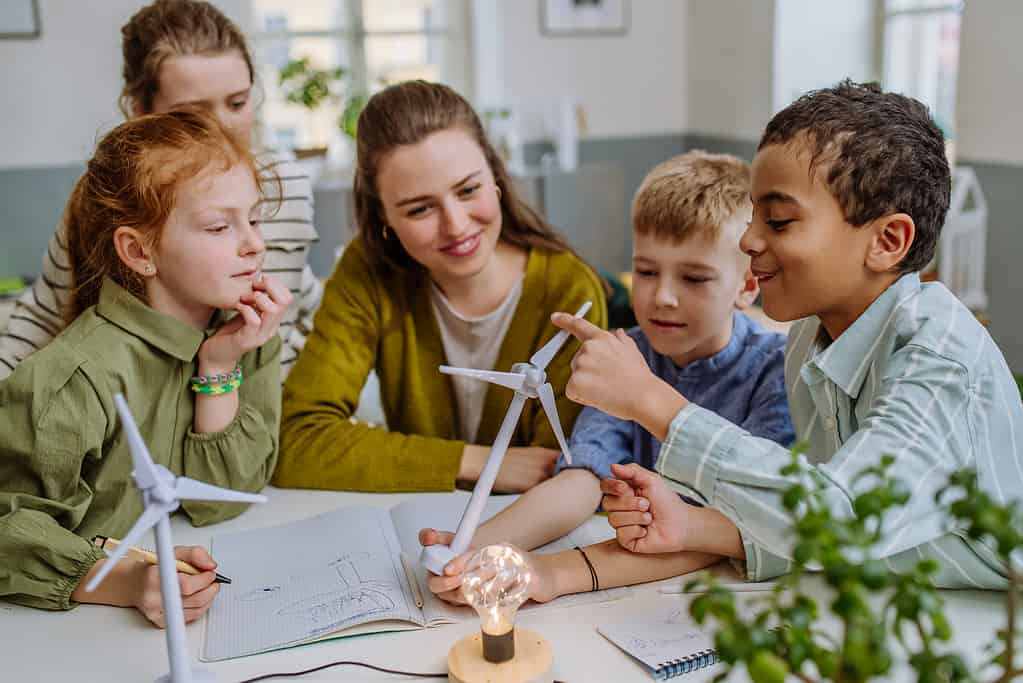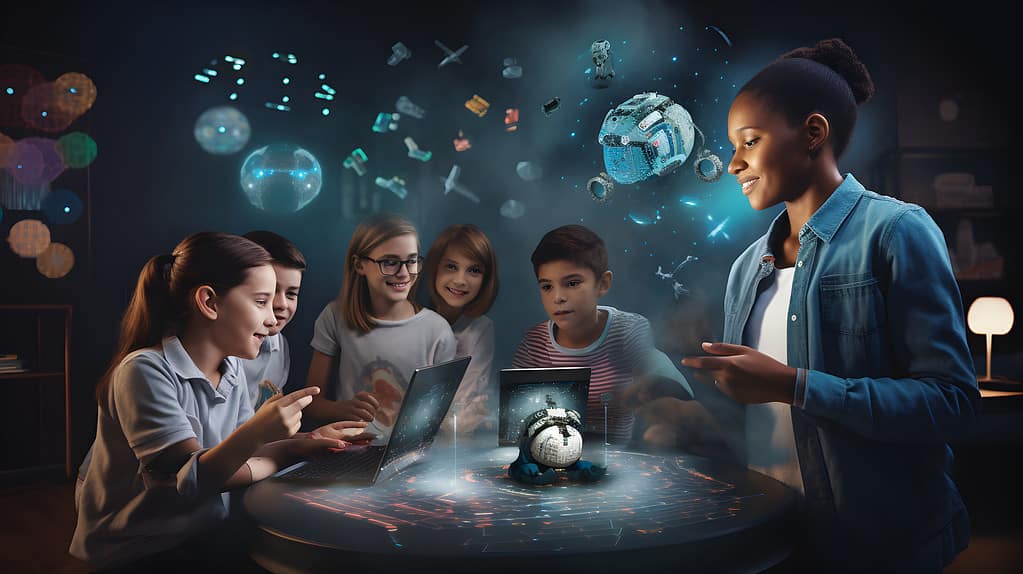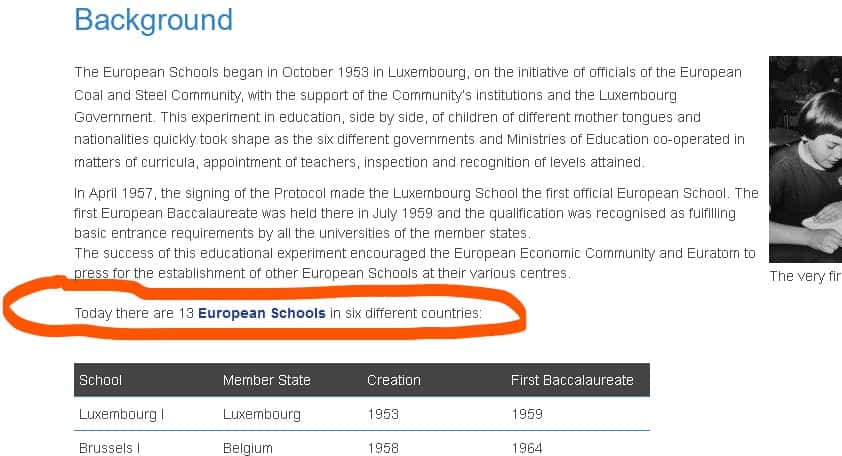Table of Contents
Empowering the Next Generation: Teaching Sustainability and Active Citizenship
In a world facing increasing environmental challenges, it is more important than ever to empower the next generation with the knowledge and skills necessary to create a sustainable future. Teaching sustainability and active citizenship to young people not only equips them with the tools to make a positive impact on the planet, but also fosters a sense of responsibility and understanding of global issues.
Through engaging educational programs and initiatives, schools and communities are now prioritizing the integration of sustainable practices into their curriculum. By incorporating lessons on environmental conservation, resource management, and social responsibility, educators are shaping young minds to become active environmental stewards and change-makers.
By teaching sustainability, students learn how their actions can directly impact the world around them. They develop critical thinking skills, problem-solving abilities, and a deep understanding of the interconnectedness of global systems. As a result, the next generation becomes equipped with the knowledge and passion to drive innovative solutions that address climate change, biodiversity loss, and other pressing environmental issues.

In this article, we will explore the importance of teaching sustainability and active citizenship to empower the next generation. We will examine the benefits of such education, highlight successful initiatives, and provide practical tips for incorporating sustainability into educational settings. By nurturing our youth as sustainability champions, we are securing a brighter and more sustainable future for all.
Importance of teaching sustainability and active citizenship
In a world facing increasing environmental challenges, it is more important than ever to empower the next generation with the knowledge and skills necessary to create a sustainable future. Teaching sustainability and active citizenship to young people not only equips them with the tools to make a positive impact on the planet but also fosters a sense of responsibility and understanding of global issues.
Through engaging educational programs and initiatives, schools and communities are now prioritizing the integration of sustainable practices into their curriculums. By incorporating lessons on environmental conservation, resource management, and social responsibility, educators are shaping young minds to become active environmental stewards and change-makers.
The role of education in empowering the next generation
Teaching sustainability and active citizenship is crucial for the future of our planet. By instilling these values in young minds, we empower them to become responsible global citizens who are aware of their impact on the environment. This education goes beyond theoretical knowledge; it cultivates practical skills, critical thinking abilities, and a deep understanding of the interconnectedness of global systems.
When students learn about sustainability, they develop a sense of agency and realize that their actions can directly influence the world around them. They become more conscious of their consumption habits, waste management, and environmental footprints. This knowledge empowers them to make informed choices and take meaningful actions to address pressing environmental issues, such as climate change, biodiversity loss, and pollution.
Teaching sustainability in schools
To effectively teach sustainability in schools, educators need to integrate it into the curriculum across various subjects. This interdisciplinary approach ensures that students receive a comprehensive education on sustainability, rather than treating it as a standalone topic. For example, science classes can explore environmental impacts, while social studies can examine the cultural and societal aspects of sustainability.

It is also essential to incorporate hands-on, experiential learning opportunities into sustainability education. Field trips to local parks or nature reserves allow students to directly observe and appreciate the natural world. Practical activities like gardening or recycling projects provide tangible experiences that reinforce sustainable practices and inspire a sense of responsibility towards the environment.
Strategies for incorporating sustainability into the curriculum
Integrating sustainability into the curriculum requires careful planning and creativity. Here are a few strategies that educators can implement:
1. Project-based Learning: Assigning sustainability-focused projects allows students to delve deep into real-world issues, conduct research, and propose sustainable solutions. This approach encourages critical thinking, collaboration, and problem-solving skills.
2. Cross-disciplinary Collaboration: Encourage teachers from different subjects to work together and integrate sustainability themes into their lessons. For example, a math teacher can explore data analysis related to carbon emissions, while an English teacher can assign readings on environmental justice.
3. Guest Speakers and Experts: Invite sustainability experts and local community members to share their experiences and knowledge with students. This exposes students to different perspectives and provides valuable insights into sustainability practices and career paths.
Active citizenship and its impact on the community
Active citizenship is like being the superhero your community needs, but without the fancy costume. It’s about getting off the couch, rolling up your sleeves, and making a difference. By teaching active citizenship alongside sustainability, we’re giving students the power to fight for the well-being of their communities. From volunteering to voting, they become the champions of democratic processes and defenders of social and environmental justice. So, let’s suit up and show the world what being an active citizen is all about!
Teaching active citizenship alongside sustainability helps students understand the importance of civic engagement and taking responsibility for the well-being of their communities. Active citizenship involves participating in community service, engaging in democratic processes, and advocating for social and environmental justice.
When students actively engage in their communities, they develop a sense of connection and empathy for others. They become aware of the challenges faced by marginalized groups and the impact of environmental degradation on vulnerable populations. This awareness drives them to take action, leading to positive change at both local and global levels.
Cultivating active citizenship in the classroom
To cultivate active citizenship in the classroom, educators can implement the following strategies:
1. Service-Learning Projects: Engage students in service-learning projects that address community needs. This hands-on approach allows students to make a tangible difference while learning about social issues and the importance of collective action.
2. Simulations and Debates: Organize simulations and debates to help students understand the complexities of social and environmental issues. This encourages critical thinking, empathy, and the development of persuasive communication skills.
3. Student-led Initiatives: Empower students to initiate and lead their own projects that address local challenges. This fosters a sense of ownership and responsibility, allowing students to actively contribute to their communities.
Collaborative projects and initiatives for sustainability and active citizenship
Collaborative projects and initiatives provide valuable opportunities for students to engage in sustainability and active citizenship. Here are a few examples:
1. Community Gardens: Establishing community gardens not only promotes sustainable agriculture but also brings people together. Students can participate in planning, planting, and maintaining these gardens, fostering a sense of ownership and shared responsibility.
2. Environmental Clubs: Setting up environmental clubs allows students to organize sustainability-focused events, awareness campaigns, and educational workshops. These clubs provide a platform for students to actively engage with sustainability issues and inspire their peers to take action.
3. Partnerships with Local Organizations: Collaborating with local environmental organizations or government agencies allows students to work on meaningful projects and contribute to larger sustainability initiatives. This partnership provides real-world learning experiences and expands students’ understanding of environmental challenges.
Resources and tools for teaching sustainability and active citizenship
Numerous resources and tools are available to support educators in teaching sustainability and active citizenship:
1. Online Platforms: Websites and platforms offer a wide range of educational resources, lesson plans, and activity ideas related to sustainability. Examples include the United Nations Sustainable Development Goals (SDGs) website and the Environmental Protection Agency’s (EPA) educational resources.
2. Professional Development Opportunities: Educators can attend workshops, conferences, and webinars focused on sustainability education. These opportunities provide guidance, inspiration, and networking with like-minded educators.
3. Local Partnerships: Collaborating with local organizations, universities, or government agencies can provide access to expertise, funding, and additional educational resources.
Success stories and case studies of schools promoting sustainability and active citizenship
Several schools have successfully implemented sustainability and active citizenship education. For example:
1. Green School, Bali: Green School in Bali has developed a curriculum centered around sustainability, providing students with hands-on experiences in permaculture, renewable energy, and community engagement. The school’s commitment to sustainability has gained international recognition as a model for holistic education.
2. The Green School, New Zealand: The Green School in New Zealand focuses on environmental education, sustainability, and active citizenship. Students participate in practical projects such as tree planting, waste reduction initiatives, and community outreach programs.
These success stories demonstrate the positive impact of incorporating sustainability and active citizenship into education, inspiring other schools to follow suit.
Conclusion: Empowering the next generation for a sustainable future
Teaching sustainability and active citizenship is a powerful way to empower the next generation. By providing students with the knowledge, skills, and values necessary to create a sustainable future, we ensure that they become responsible global citizens who can address pressing environmental challenges. With engaging educational programs, interdisciplinary approaches, and collaborative initiatives, we can nurture a generation of sustainability champions who will drive positive change and secure a brighter and more sustainable future for all.







